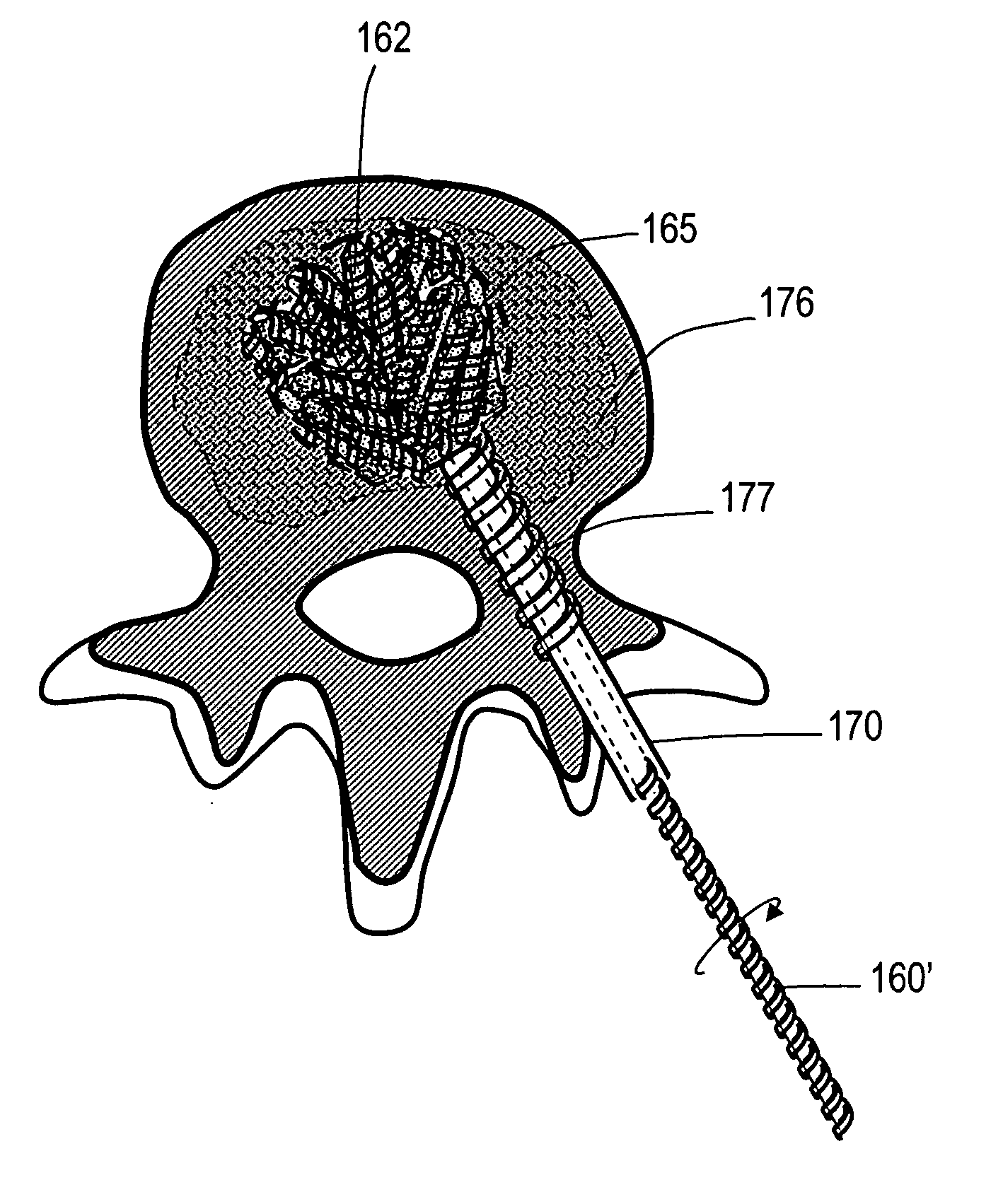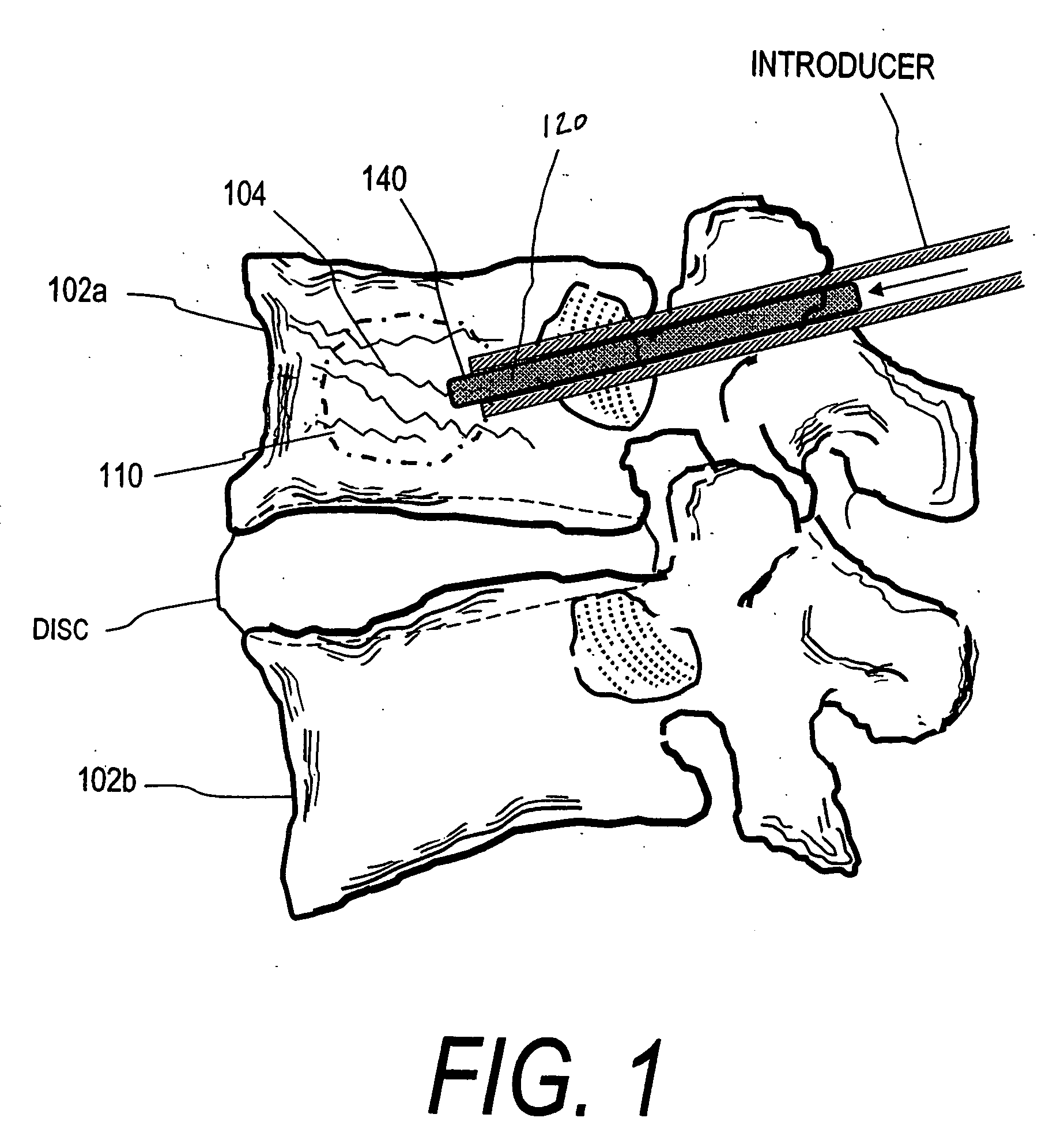Implants and methods for treating bone
a technology of implants and bone, applied in the field of filamentlike implants, can solve the problems of fractures in the spine and hips, affecting mobility and quality of life, and the medical advances aimed at slowing or arresting bone loss from aging have not provided solutions to this problem
- Summary
- Abstract
- Description
- Claims
- Application Information
AI Technical Summary
Benefits of technology
Problems solved by technology
Method used
Image
Examples
Embodiment Construction
[0042] The present invention relates to implants and methods for treating bone abnormalities such as a vertebral fracture. More specifically, the invention is directed to a porous biocompatible metal or composite scaffold that has pores of a selected dimension, including scaffold ligaments that can have nanoscale pores. The implant can further have a very high modulus or a gradient in modulus. The novel material is suited for several orthopedic applications including treatment of compression fractures, spine fusion and joint replacement procedures.
[0043]FIG. 1 shows a spine segment 100 in a patient with an osteoporotic vertebra 102a that is susceptible to a compression fracture 104. The cancellous bone in the interior of the vertebra can fracture and collapse. The targeted treatment site is indicated at 110. The targeted site or sites 110 as indicated in FIG. 2 can be supported by direct injection of at least one deformable filament 120 corresponding to the invention under suitable...
PUM
 Login to View More
Login to View More Abstract
Description
Claims
Application Information
 Login to View More
Login to View More - R&D
- Intellectual Property
- Life Sciences
- Materials
- Tech Scout
- Unparalleled Data Quality
- Higher Quality Content
- 60% Fewer Hallucinations
Browse by: Latest US Patents, China's latest patents, Technical Efficacy Thesaurus, Application Domain, Technology Topic, Popular Technical Reports.
© 2025 PatSnap. All rights reserved.Legal|Privacy policy|Modern Slavery Act Transparency Statement|Sitemap|About US| Contact US: help@patsnap.com



